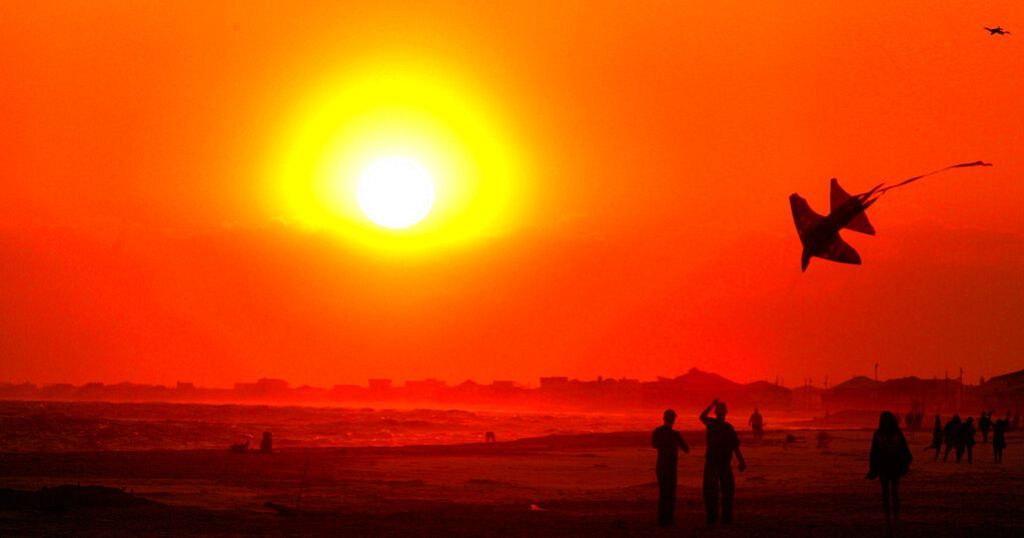
Recent Soaring Temperatures in West Africa and the Sahel Linked to Human-Induced Climate Change

Introduction
Recent soaring temperatures in West Africa and the Sahel, including Mali, have led to hundreds of deaths, with researchers attributing the extreme heat to human-induced climate change. This report aims to provide an overview of the situation, highlighting the impact of climate change on temperature rise and the need for urgent action to mitigate its effects.
Temperature Rise in Mali
In Mali, temperatures surpassed 48°C last month, with Gabriel Toure Hospital reporting 102 deaths in early April, particularly affecting older individuals. Scientists argue that without human activities such as burning fossil fuels and deforestation, temperatures wouldn’t have reached such alarming levels. The Sustainable Development Goal (SDG) 13, “Climate Action,” emphasizes the need to combat climate change and its impacts.
Climate Change’s Contribution to Temperature Increase
A study by the World Weather Attribution group found that climate change made temperatures in Mali and Burkina Faso up to 1.5°C warmer than usual, with nights being 2°C hotter on average. They warn that such heatwaves, once rare, could become more common as global temperatures continue to rise. This highlights the importance of SDG 13 in addressing climate change and its impacts.
The Role of El Niño in Southern Africa’s Drought
However, the severe drought plaguing Southern Africa earlier this year is attributed more to the El Niño weather phenomenon than climate change. While millions faced hunger due to crop failures and water shortages leading to cholera outbreaks, researchers suggest that El Niño, not climate change, primarily influenced the low rainfall across the region from December to February. SDG 2, “Zero Hunger,” emphasizes the need to achieve food security and improve nutrition.
The Complex Relationship between Climate Change and Extreme Weather Events
These findings highlight the complex relationship between climate change and extreme weather events, with scientists emphasizing the need for urgent action to mitigate their impact. SDG 13 plays a crucial role in addressing climate change and its effects on extreme weather events, ensuring a sustainable future for all.
SDGs, Targets, and Indicators
| SDGs | Targets | Indicators |
|---|---|---|
| SDG 13: Climate Action | 13.1: Strengthen resilience and adaptive capacity to climate-related hazards and natural disasters | Indicator not mentioned in the article |
| 13.2: Integrate climate change measures into national policies, strategies, and planning | Indicator not mentioned in the article | |
| 13.3: Improve education, awareness-raising, and human and institutional capacity on climate change mitigation, adaptation, impact reduction, and early warning | Indicator not mentioned in the article | |
| 13.a: Implement the commitment undertaken by developed-country parties to the United Nations Framework Convention on Climate Change to a goal of mobilizing jointly $100 billion annually by 2020 from all sources to address the needs of developing countries in the context of meaningful mitigation actions and transparency on implementation and fully operationalize the Green Climate Fund through its capitalization as soon as possible | Indicator not mentioned in the article | |
| 13.b: Promote mechanisms for raising capacity for effective climate change-related planning and management in least developed countries and small island developing States, including focusing on women, youth, and local and marginalized communities | Indicator not mentioned in the article | |
| SDG 15: Life on Land | 15.1: By 2020, ensure the conservation, restoration, and sustainable use of terrestrial and inland freshwater ecosystems and their services, in particular forests, wetlands, mountains, and drylands, in line with obligations under international agreements | Indicator not mentioned in the article |
| 15.2: By 2020, promote the implementation of sustainable management of all types of forests, halt deforestation, restore degraded forests, and substantially increase afforestation and reforestation globally | Indicator not mentioned in the article |
1. Which SDGs are addressed or connected to the issues highlighted in the article?
The issues highlighted in the article are connected to SDG 13: Climate Action and SDG 15: Life on Land.
2. What specific targets under those SDGs can be identified based on the article’s content?
Based on the article’s content, the specific targets under SDG 13 that can be identified are:
- 13.1: Strengthen resilience and adaptive capacity to climate-related hazards and natural disasters
- 13.2: Integrate climate change measures into national policies, strategies, and planning
- 13.3: Improve education, awareness-raising, and human and institutional capacity on climate change mitigation, adaptation, impact reduction, and early warning
- 13.a: Implement the commitment undertaken by developed-country parties to the United Nations Framework Convention on Climate Change to a goal of mobilizing jointly $100 billion annually by 2020 from all sources to address the needs of developing countries in the context of meaningful mitigation actions and transparency on implementation and fully operationalize the Green Climate Fund through its capitalization as soon as possible
- 13.b: Promote mechanisms for raising capacity for effective climate change-related planning and management in least developed countries and small island developing States, including focusing on women, youth, and local and marginalized communities
The specific target under SDG 15 that can be identified is:
- 15.2: By 2020, promote the implementation of sustainable management of all types of forests, halt deforestation, restore degraded forests, and substantially increase afforestation and reforestation globally
3. Are there any indicators mentioned or implied in the article that can be used to measure progress towards the identified targets?
No indicators are mentioned or implied in the article that can be used to measure progress towards the identified targets.
Behold! This splendid article springs forth from the wellspring of knowledge, shaped by a wondrous proprietary AI technology that delved into a vast ocean of data, illuminating the path towards the Sustainable Development Goals. Remember that all rights are reserved by SDG Investors LLC, empowering us to champion progress together.
Source: africanews.com

Join us, as fellow seekers of change, on a transformative journey at https://sdgtalks.ai/welcome, where you can become a member and actively contribute to shaping a brighter future.






